Events / SoundS
Sonic Research
in Academia and the Arts
31 May — 1 June 2019 | PhD Conference

Photo © XXX
31 May — 1 June 2019 | 10 am — 6 pm
Lietzenburger Str. 45
10789 Berlin
Room : 314
Since 2017 it is possible to obtain a PhD in Sound Studies and Sonic Arts at the UdK Berlin. The conference Sonic Research in Academia and the Arts, taking place from May 31- June1, 2019 at the department of Sound Studies and Sonic Arts at the UdK Berlin, was created to promote this possibility to a wider audience. Invited are not only our own students and alumni but also to anyone interested in the Sonic Arts, Sound in New Media, Soundscape Research, and Sonic Research.
In coöperation with the department of Sound in New Media at the Aalto University Helsinki, the Department of Finnish Language and Culture Research at the University of Eastern Finland in Joensuu the conference features seven PhD candidates.
The presentations and discussions of the selected PhD projects provides a deeper insight into the wide range of research topics of this still very young discipline to the conference attendees – which can be observed through the different foci of the participating departments. While the UdK Berlin combines Sound Studies with a focus on Sonic Arts, Helsinki stresses on Sound in New Media and Joensuu lays the focus on Soundscape Research.
Alongside the research project presentations, the conference presents two discussion rounds that offer the opportunity for intense involvement with current questions of the study. The first panel is dedicated to Aesthetic Research, a topic that has been in focus at the Aalto University for a long time. The second and last panel addresses international coöperation – which has been put into practice with this very conference by Sound Studies and Sonic Arts. This panel concludes the conference and allows for a résumé and the discussion of how this exchange can be repeated or intensified in the future.
Programm
31 May 2019
| 10:00 | Opening | Volker Straebel, Sabine Sanio |
| 10:30 | Talk | Antti Ikonen : Designing Sounds for a Children’s Hospital |
| 11:30 | Coffee Break | |
| 11:45 | Talk | Bernhard Rietbrock : The Music of Alvin Lucier |
| 12:45 | Lunch Break | |
| 14:15 | Talk | Ida Havukainen : Positions of the body in singing teaching |
| 15:15 | Panel | Sound Studies, Sonic Arts and perspectives of aesthetic research with Harri Laakso, Antti Ikonen, Jacob Eriksen, Volker Straebel and Sabine Sanio |
| 16:15 | Reception |
1 June 2019
| 10:00 | Talk | Heta Kaisto : Siren and the Imperfect Songs of Disaster |
| 11:00 | Coffee Break | |
| 11:30 | Talk | Jacob Eriksen : Sounding the Posthuman Attitude — a historico-aesthetical analysis of onto-epistomological perspectives in contemporary sonic arts |
| 12:30 | Lunch Break | |
| 14:00 | Talk | Gabriel Santander : Heterosemiosis and Intermedial Aspects in Peter Ablinger’s Voices and Piano Cycle |
| 15:00 | Coffee Break | |
| 15:30 | Panel | Sound Studies, Sonic Arts and perspectives of international transdiscliplinary coöperation with Harri Laakso, Noora Vikman, Bernhard Rietbrock, Volker Straebel and Sabine Sanio |
| 17:00 | End | of the conference |
JACOB ERIKSEN
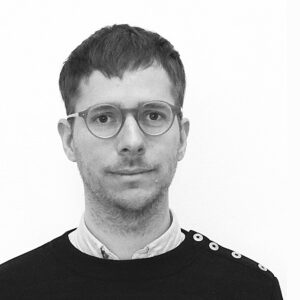
JACOB ERIKSEN
Lecturer | Sound Studies and Sonic Arts (M.A.)
Jacob Eriksen is a sound artist and sound researcher with a M.A. in Sound Studies from Berlin University of the Arts and a B.A. in Musicology with electives in Philosophy and Literature from the University of Copenhagen and York University. His focus as a sound artist and theorist lays on existentialism, post-structuralism and posthuman theories. Jacob Eriksen lives and works in Berlin, where he is part of the faculty of the master’s program Sound Studies and Sonic arts, Berlin University the Arts. He also teaches in Cultural Studies at the Humboldt University of Berlin and in artistic research at the Rhythmic Music Conservatory in Copenhagen.
Sounding the posthuman attitude — a historico-aesthetical analysis of onto-epistemological perspectives in contemporary sonic arts
In the recent years works of sonic art have increasingly engaged with the notion of the posthuman : Environmental sound art ; artificial intelligence in musical composition ; infra- and ultrasound in electronic music and sound installations ; posthuman theory in sound art conceptualisation. However, the present proposal claims, that we have always been posthuman. This has manifested in various ways throughout history, and must therefore to be understood as an attitude. The posthuman attitude engages with and seeks beyond limits of human perception, cognition and knowledge. This attitude, I suggest, is to be found in contemporary as well as in historical works of sonic arts. The original contribution to knowledge of this project is to bring new perspectives into the research fields of posthuman theory and sound studies by asking : How does the posthuman attitude manifest in the sonic arts ? How do we foster an adequate theory of the posthuman in the sonic arts ? And what knowledge can be derived from a specifically sonic artistic attitude towards the posthuman ?
IDA HAVUKAINEN
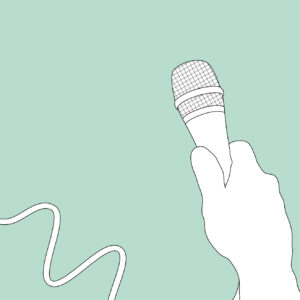
IDA HAVUKAINEN
PhD candidate | University of Eastern Finland
Ida Havukainen is a PhD student in Social and Cultural Encounters doctoral programme in University of Eastern Finland. Graduated with a Master of Arts in Cultural studies in 2016, majoring in ethnomusicology. Graduated with a BA in music pedagogy in 2017. Forthcoming article in December 2019 : “Kehon positiot laulunopetuksen käytännöissä” (“Positions of the body in singing teaching”).
Positions of the body in singing teaching
In this study I take a closer look to the Finnish singing education system and its conventions in how to handle with a body learning to sing. My study leans on phenomenological theory of the human being, which emphasizes the idea of human being as a form consisted of mind, physical body, and a situation in which it exists. I use the term body in a sense that every human being consists of these components, and that no other component is any lesser than other. In todays world, however, mind plays the most important role in teaching and goes with music and singing teaching too. The bodily sensations — for example, how does my chest feel or how does my breathing feel — are quite foreign to those, who don’t listen to their bodies and instead listen only to their thoughts trying to make sense of everything in a way, that the experiences one has, could be verbalized as quickly as possible.
The idea for this study emerges from my own background as a singing student and a singing teacher. Therefore, I have chosen to use autoethnographical methods alongside more traditional ethnographic methods in this study. To accompany this autoethnographical data I have comprised some interview-based data with other singing teachers and an enquiry data about experiences of learning to sing. The analysis of the data shows that there are two main types of teaching singing. These types I have named as a body-based teaching style and a voice-based teaching style. In my study I discuss these styles and their relation to other music education philosophies and the current state of music education in the field.
ANTTI IKONEN

ANTTI IKONEN
Lecturer | Aalto University
Antti Ikonen started his career in the early 1980s without any formal education. He obtained skills in sound design and applied music through practice in numerous artistic and commercial productions : contemporary dance, theatre, short films, radio plays, art installations, and new media. Since 2001, he has been working as a lecturer of sound design and music in Media Lab Helsinki (Aalto University). His current research handles audible interior design, focusing in questions of listening.
Designing sounds for a children’s hospital
Contemplative listening is the most crucial skill and fundamental method when designing sounds for specific environments. It is essential to know the ingredients and understand the behaviour of the soundscape in question, and especially when using generative methods in (re)constructing or (re)creating a soundscape this cannot be fully achieved without listening for an extended period of time. Furthermore, soundscapes and aural interiors can be listened to in a reduced way as they were ambient music.
In this talk I will introduce an actual large-scale interior sound design project in order to delineate the characteristics of sound as an element, material and subject of discussion in a bigger planning context. A new hospital for children in Helsinki, Finland was completed and taken into use in 2018. Aside from patient rooms and facilities for medical operations, large areas of this hospital are being equipped with loudspeakers. The loudspeakers are used to play a generative ambient soundscape specially designed and tailored for the hospital. While going through the project, I will concentrate on the importance of listening within the design process and evaluation of the outcomes rather than going deeply into technical details or administrative issues.
HETA KAISTO

HETA KAISTO
Doctor of Art candidate | Aalto University
Heta Kaisto (MA) is a doctoral student in visual culture at Aalto University School of Arts, Design and Architecture, and currently working as a director of Rauma Art Museum, Finland. She has a background in art
history, comparative literature and philosophy, and she takes a deep interest in music and sound. In her practice-based research she explores writing as a mode of thinking in texts, images and sounds in the context of post-war theory and art. As a part of her artistic research, she has co-written and directed a radio play “A Hundred-year-old Night” based on archival materials of the Finnish Civil War in 1918. She is about to start to work on her second project under a title “songs of disaster”.
Siren and the Imperfect Songs of Disaster
I am a writer, curator and singer-songwriter from Helsinki, Finland. In my research, “in Resonance, for — Writing towards the Disaster” I explore through the concept of disaster and resonance the boundaries of writing and thinking in philosophy. How to deal with an experience that is outside the possibilities of rational meaning-making ?
With the help of writers that have pushed the boundaries of fact and fiction such as Maurice Blanchot and PJ Harvey, I try to write towards a limit experience of a disaster. My position is one of a theorist/artist : at the same time exploring the poiesis of making and the poetics of it. In my research sound acts as a material, a relation and a method. This includes for example archival interview material on Finnish civil war, listening as a method, and a voice as singularity disrupting the unity and neutral tone of the ideal discourse of philosophy. In the seminar I will focus on the latter : the possibilities of a voice to convey thinking of a disaster and what it could mean for me as a theorist/artist. I will base my talk on the essay “The Song of the Sirens” by Maurice Blanchot.
DR. HARRI LAAKSO
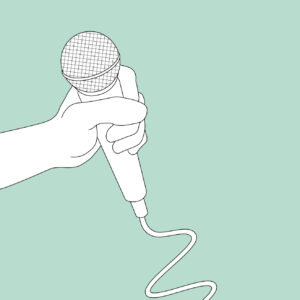
DR. HARRI LAAKSO
Associate Professor | Aalto Univeristy
Dr. Harri Laakso is Associate Professor of Photography Research in the Department of Media at Aalto University, Finland. He also works in the Department of Art and in the Department of Film, Television and Scenography. Laakso is an artist, researcher and curator interested in photographic images and theory, artistic research, word/image relations and audio plays. He has led and participated in many research projects and artistic projects and published texts and curated exhibitions especially related to photography and contemporary art.
BERNHARD RIETBROCK
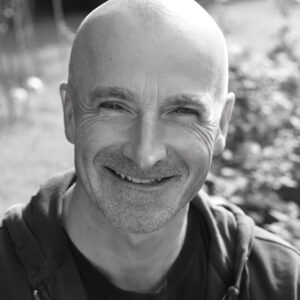
BERNHARD RIETBROCK
Research Associate | Zurich University of the Arts (ZHdK)
Bernhard Rietbrock is a musician, producer and research associate at the institute for music research at the Zurich University of the Arts (ZHdK). He is a member of the D‑A-CH research project “Hearing the Other — an Aesthetic of the Real in Experimental Music and Sound Art” and artistic director of the Ever Present Orchestra, which is dedicated to the presentation of the exceptional work of Alvin Lucier. Based on his examination of current philosophical theories on the real in the light of Lacanian conceptualization and American experimental music with a focus on Alvin Lucier’s phenomenological aesthetics, he intensively works on questions about the future perspectives of such contextualized aesthetic positions, strategies and concepts.
The Rest is Music. Genesis and Real-Aesthetic Interpretation of the Oeuvre of Alvin Lucier
As one of the most important representatives of American music of the second half of the twentieth century, Alvin Lucier’s pioneering work is most notable for making what is normally inaudible audible, but also for his very idiosyncratic way of making the audible visible or spatially tangible. His experimental compositions are aesthetic reflections that are constantly making reference to the phenomenology of sound, as well as to the perception of perception itself. What especially continues to stand out here is the consistency of the minimal aesthetic, with which he listens to the openness of the idea inherent to the site itself, far beyond the romanticism of classical art and conventional music. “It seems to me that the most interesting changes are small ones, slight subtile changes. [...] Trying to get the maximum information out of the least contrast.” (Lucier, 1995) Oriented towards Lucier’s compositional development and by means of the real, the live-electronic compositions of the 60s and 70s as well as the instrumental pieces from 1982 to the present are analyzed and historically contextualized on the basis of some examples.
PROF. DR. HABIL. SABINE SANIO
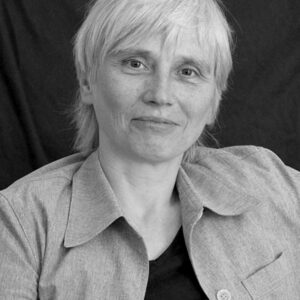
PROF. DR. HABIL. SABINE SANIO
Lecturer | Sound Studies and Sonic Arts (M.A.)
Sabine Sanio is lecturer in theory at the Master’s program Sound Studies and Sonic Arts, University of the Arts Berlin ; studied german literature and philosophy, doctorate in German Studies, habilitation in musicology and member of the D‑A-CH research project “Hearing the Other — an Aesthetic of the Real in Experimental Music and Sound Art”; numerous articles about actual aesthetics, media aesthetics and media history, Sonic Arts, New and Experimental Music and about the relationship between the arts — as books : Alternativen zur Werkästhetik : Cage und Heißenbüttel (Saarbrücken 1999), 1968 und die Avantgarde (Sinzig 2008), as editor : Sound als Zeitmodell : Zeit als Klang denken (Berlin 2014), Borderlines/Auf der Grenze : Georg Klein (Heidelberg/Berlin 2014). In English (in print): Auditory Mirrors : About the Politics of Hearing, contribution to The Oxford Handbook of Sound and Imagination, ed. M. Grimshaw, M. Walther-Hansen, and M. Knakkergaard. Oxford UP, to appear 2019.
GABRIEL SANTANDER

GABRIEL SANTANDER
Gabriel Santander graduated in Composition from the Real Conservatorio Superior de Música de Madrid, after which he won the composition competitions Flora Prieto 2010 in Madrid and the Clang Cut Book 2013, organised by KNM Berlin. He has attended Composition courses with Karlheinz Stockhausen, Brian Ferneyhough, Michael Jarrell and José María Sánchez Verdú, as well as Sound Studies seminars at the UdK Berlin. He studied in Berlin with Peter Ablinger and has researched on his work since 2010. He is currently Interim Professor in Composition at the Conservatorio Profesional de Música Joaquín Turina in Madrid and Professor in the Musicology Faculty of the International University Valencia – VIU. He has given numerous lectures on musical analysis and compositional processes at conservatoires and festivals in Madrid, Seville and Krakow. Together with Marija Pendeva he has translated into Spanish 3 books of Plays by Macedonian Playwright Goran Stefanovski, published by the Asociación de Directores de Escena de España – ADE Teatro and funded by the European Commission’s Creative Europe programme.
Heterosemiosis and Intermedial Aspects in Peter Ablinger’s Voices and Piano Cycle
This paper approaches Peter Ablinger’s Voices and Piano Cycle from a semiotic perspective by applying the notion of heterosemiosis as introduced by Juan Miguel González Martínez (2007) and Elisabeth El Refaie (2014) in the fields of vocal music and graphic narrative respectively. I argue that Ablinger’s Voices and Piano might be analysed as the superposition and cross-interaction of different semiotic systems, and that the notion of heterosemiosis might be further developed in order to elucidate the trans- and intermedial aspects of other works by Ablinger in other format configurations. A brief exposition of the theoretical framework and current state of the notion of heterosemiosis is followed by a comparative analysis of excerpts from Ablinger’s Voices and Piano Cycle.
Keywords : heterosemiosis ; heteroglossia ; musical analysis ; vocal composition ; phonological analysis ; phonological analysis.
VOLKER STRAEBEL
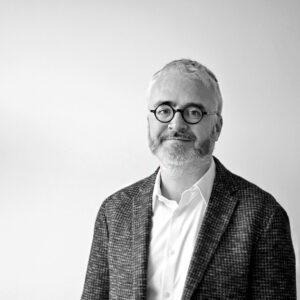
VOLKER STRAEBEL
Head of department | Sound Studies and Sonic Arts (M.A.)
Volker Straebel (1969) is a musicologist focusing on experimental and electro-acoustic music, sound art, intermedia, performance and concept art. Since 2015, he has been director of the Sound Studies Master program at the Berlin University of the Arts, after having served as director of the Electronic Music Studio at the Technical University Berlin. He has realized and performed electronic music and indeterminate works by John Cage and others. His publications include pieces on sound art, media-specific music, John Cage, Alvin Lucier, and Phill Niblock.
NOORA VIKMAN

NOORA VIKMAN
Senior Lecturer | University of Eastern Finland
Noora Vikman, is a senior lecturer in ethnomusicology and a soundscape researcher at the University of Eastern Finland, Joensuu. She has been interested in acoustic ecology and participated in ethnographic soundscape research projects since the early 1990’s and directed listening walks around the world in urban and non-urban settings. She has published articles mostly on themes related to soundscapes, acoustic environments and music making, indicating human nature relationships. Her idea of silence understood as a moderate alternative and atmospheric aspect of soundscape was developed in the Northern Italian mountain village Cembra, where she was working on her PhD in the early 2000’s. This concept has since lead her to design different applied projects where silence is mostly considered beneficial or an asset of the particular environment. One of them, a silence tourism project in 2013–15 with entrepreneurs in Northern Karelia, focused on listening to places.
